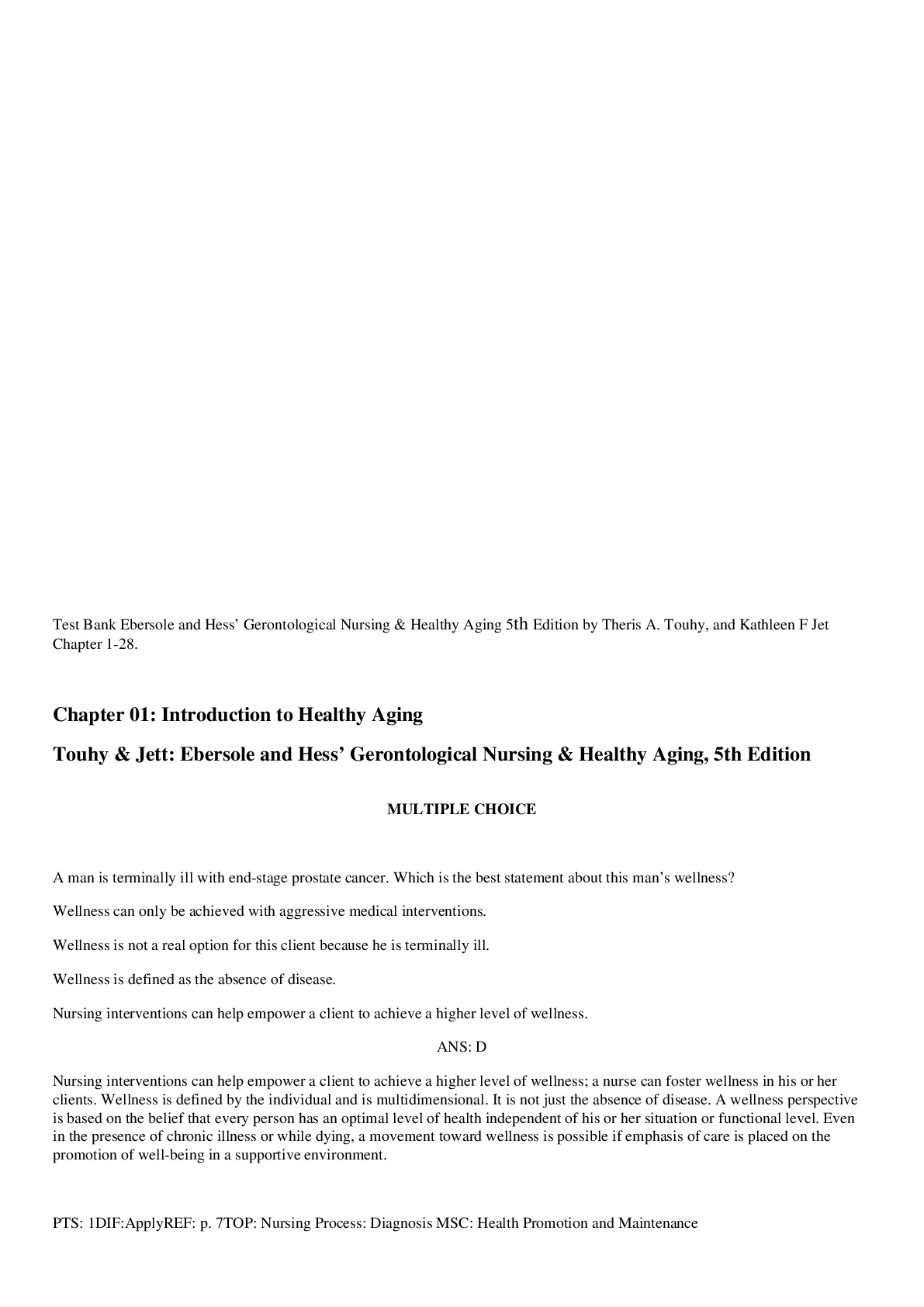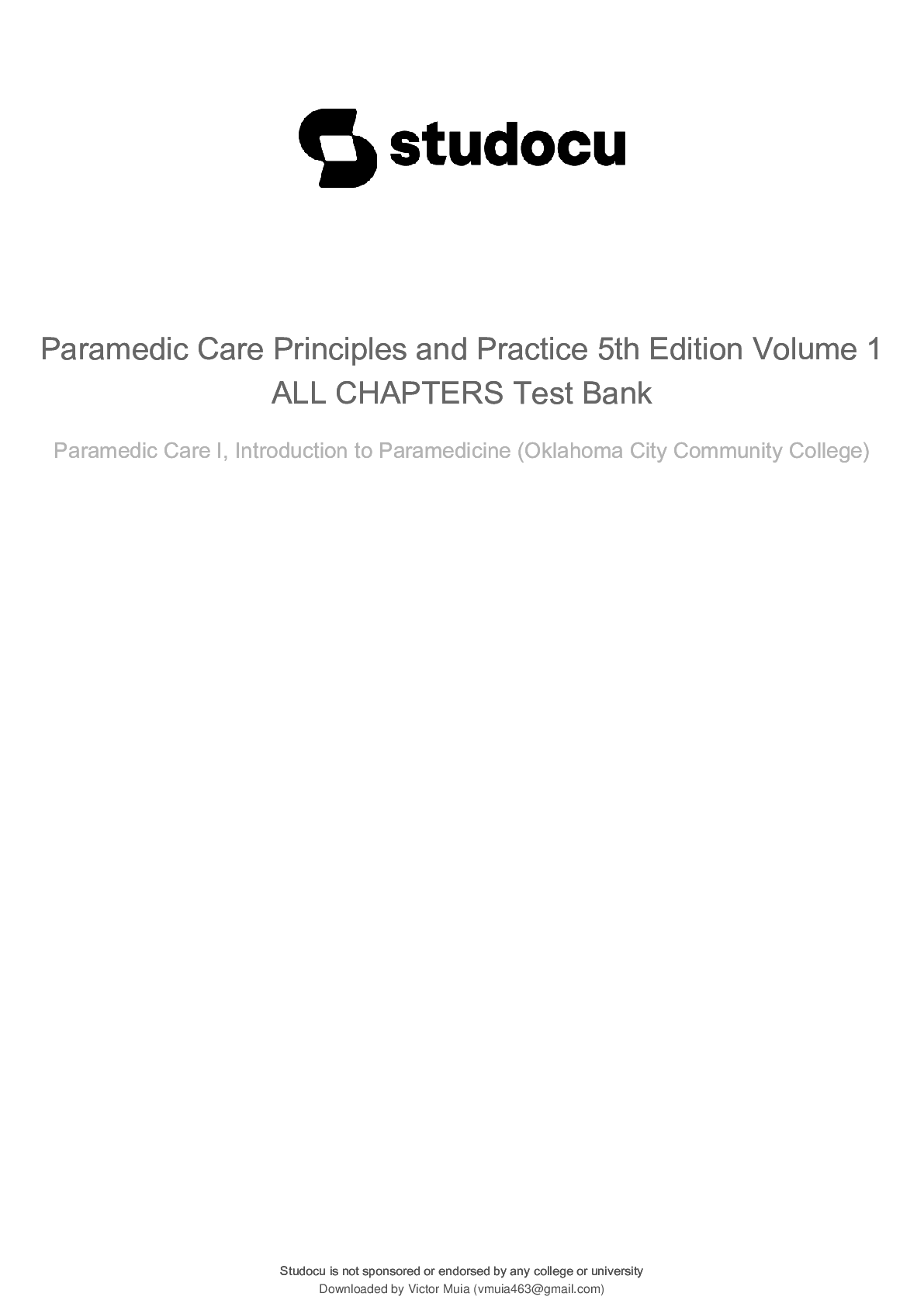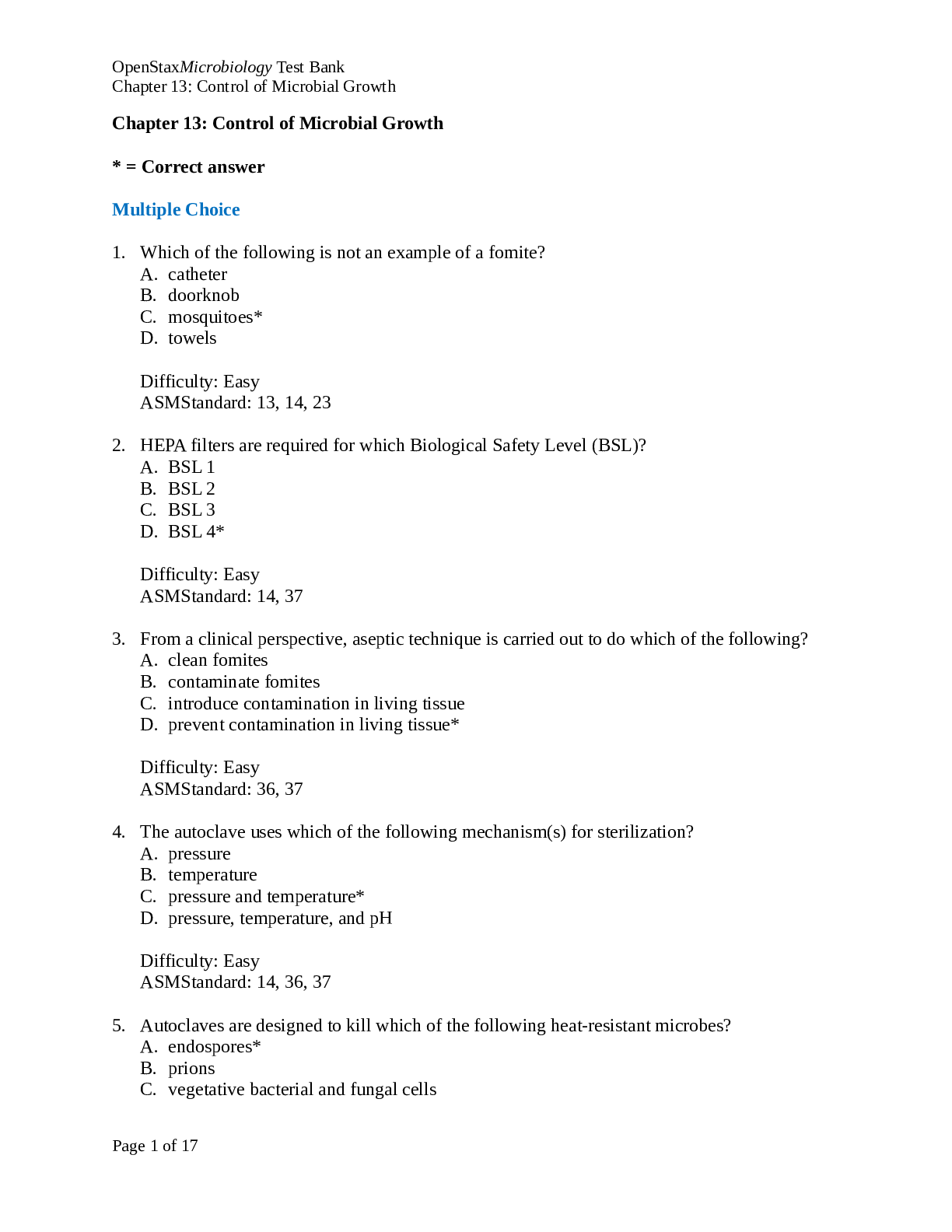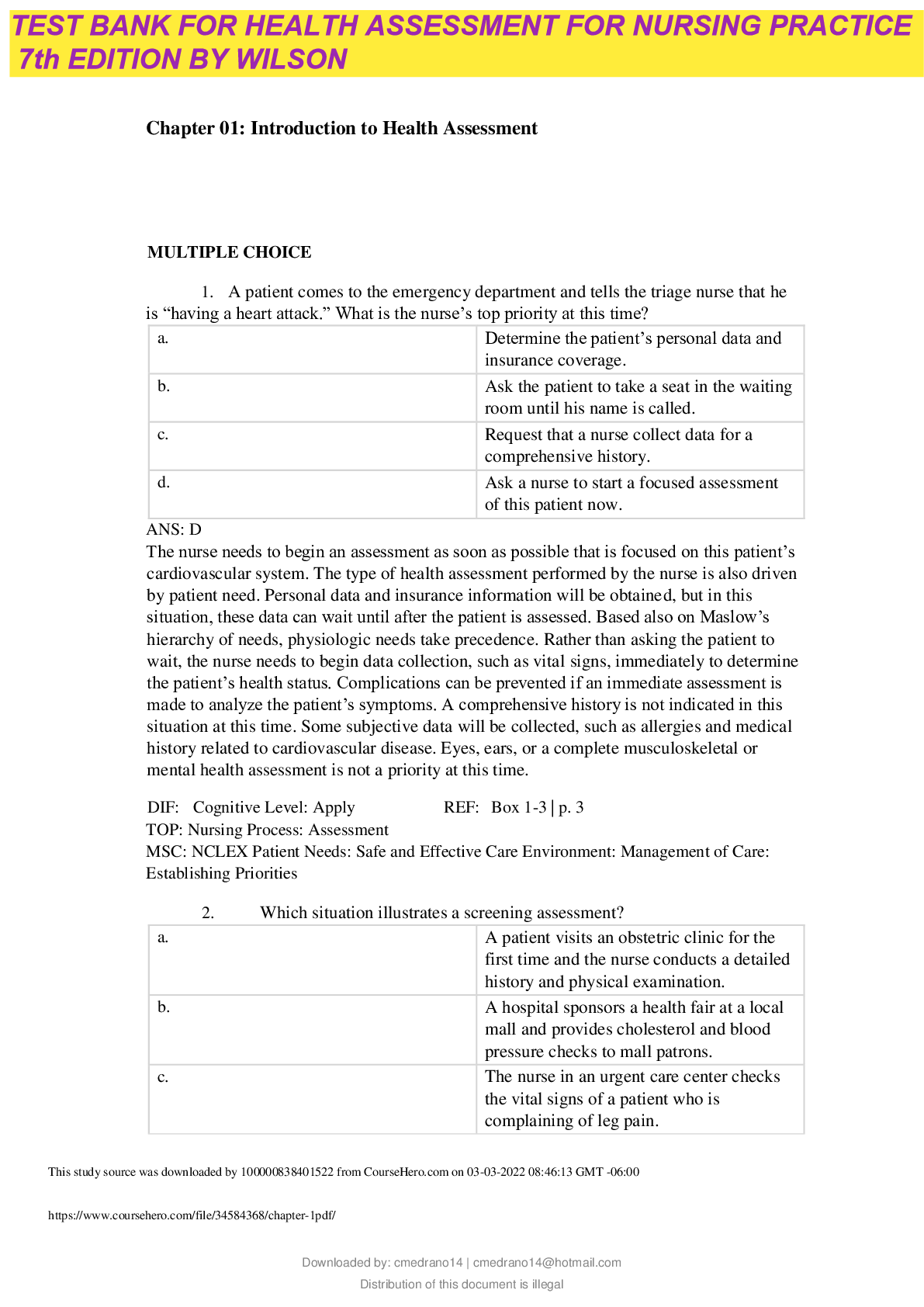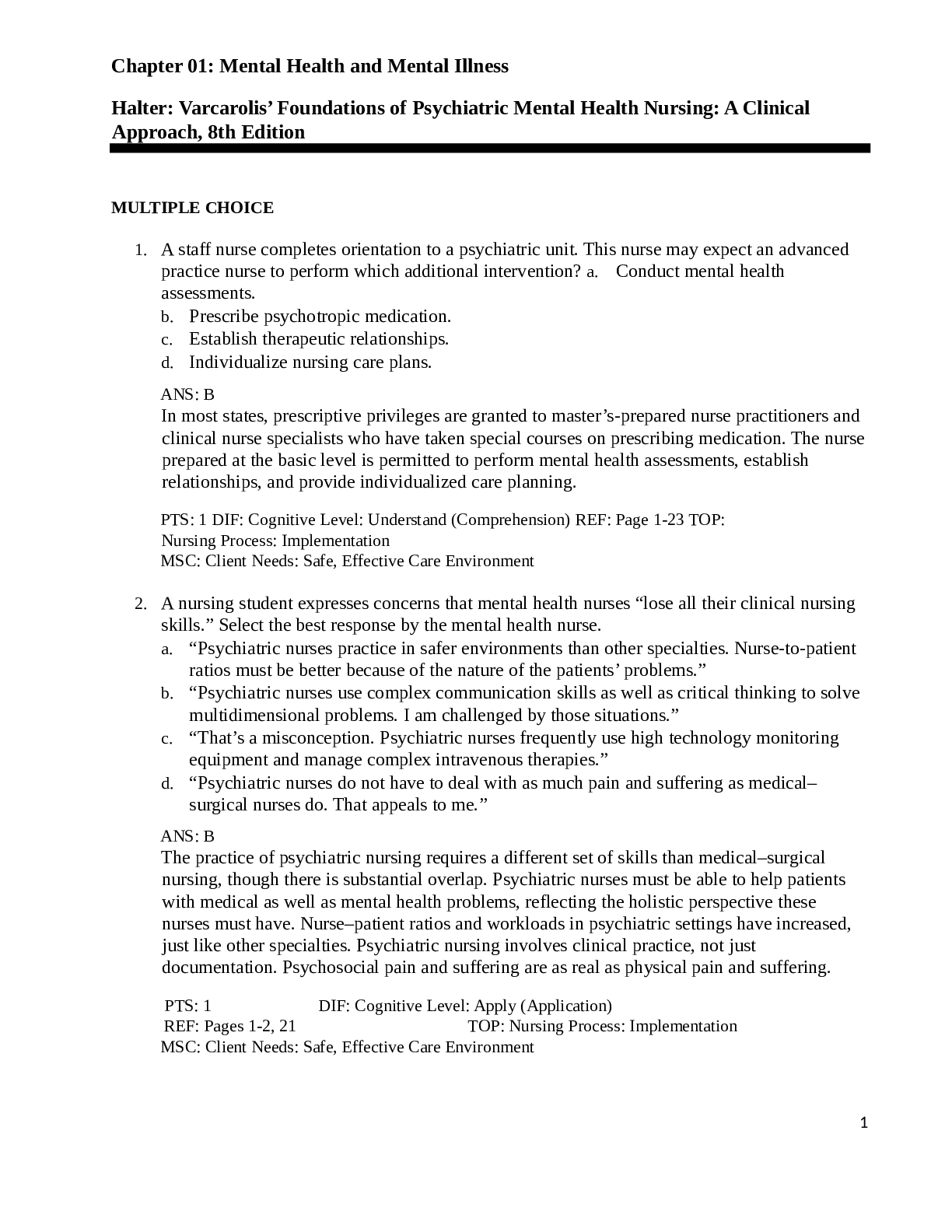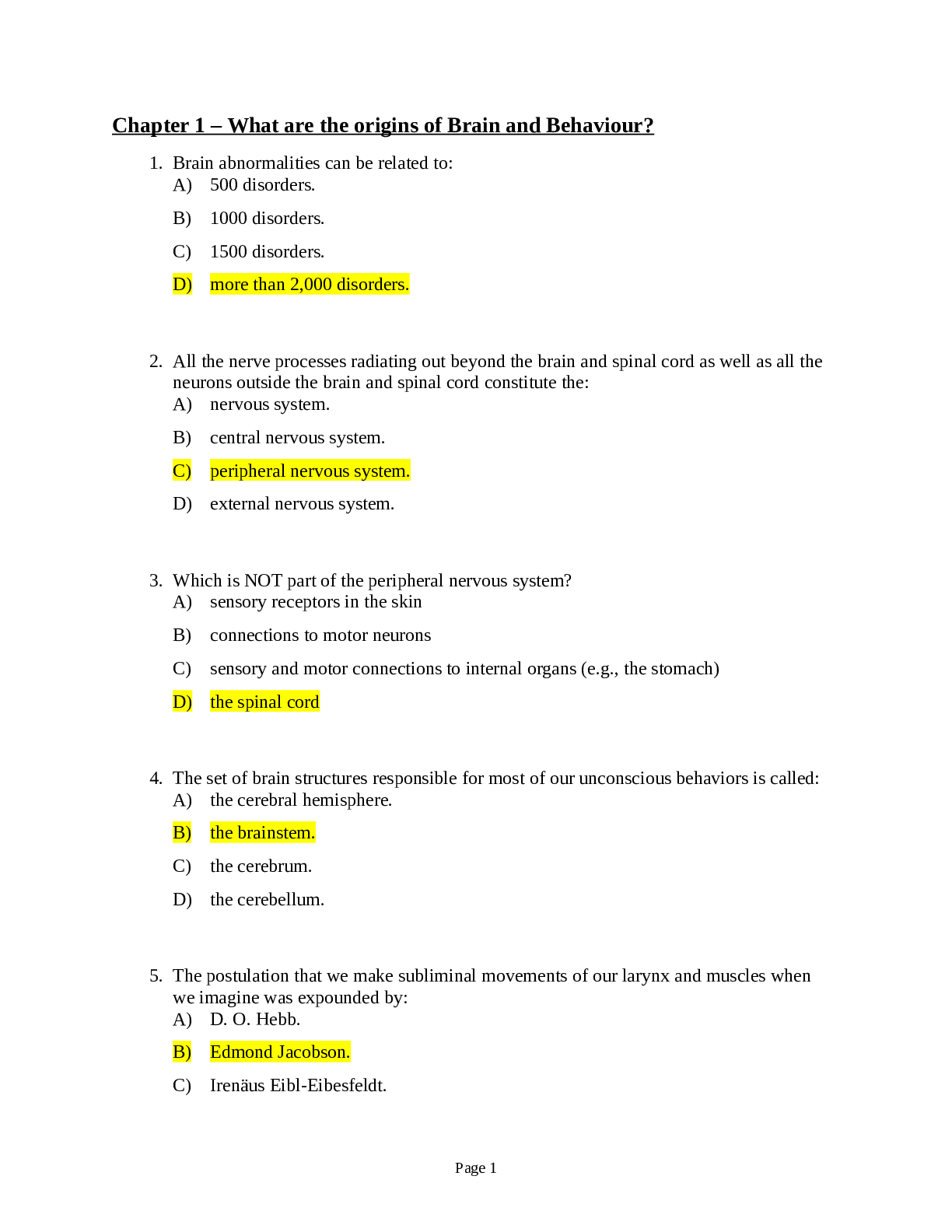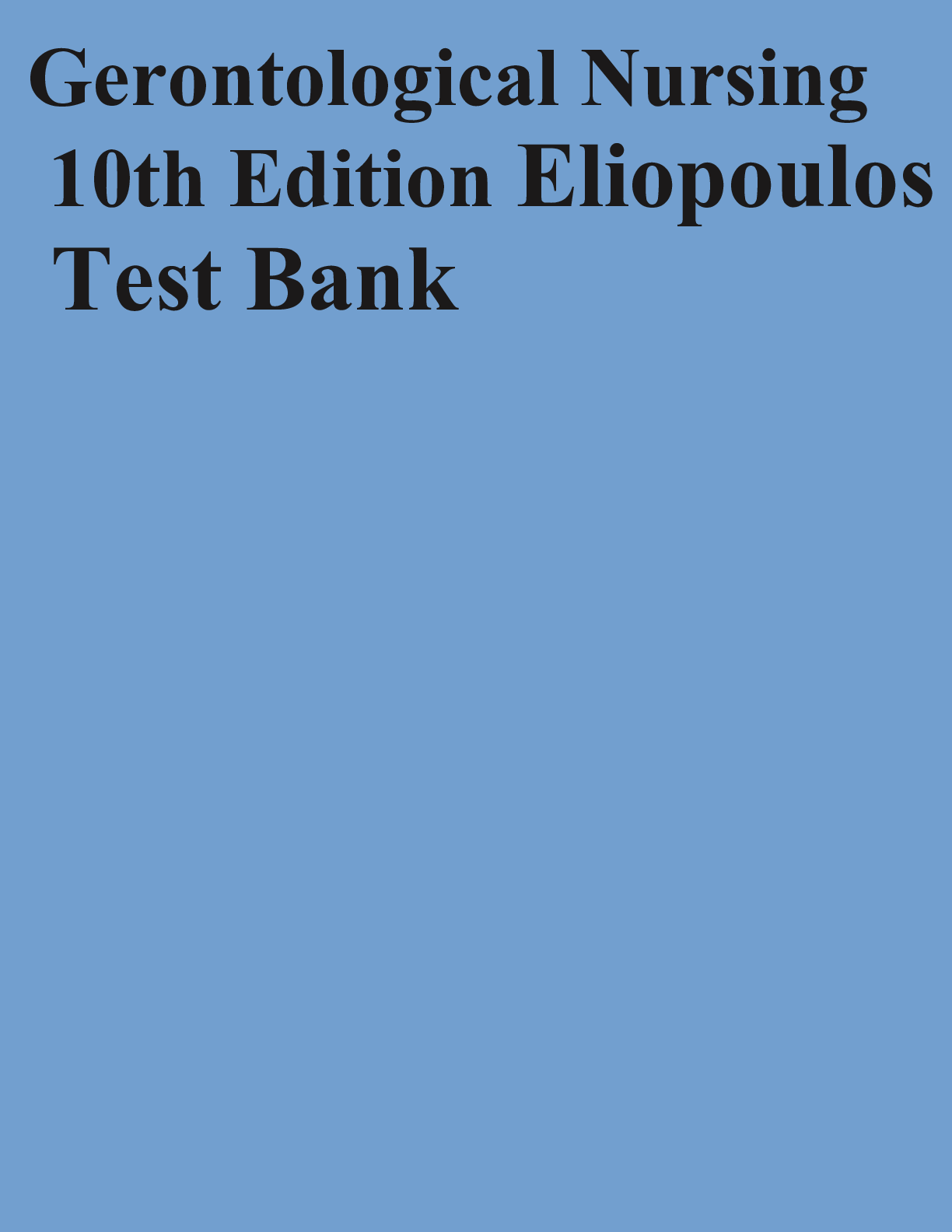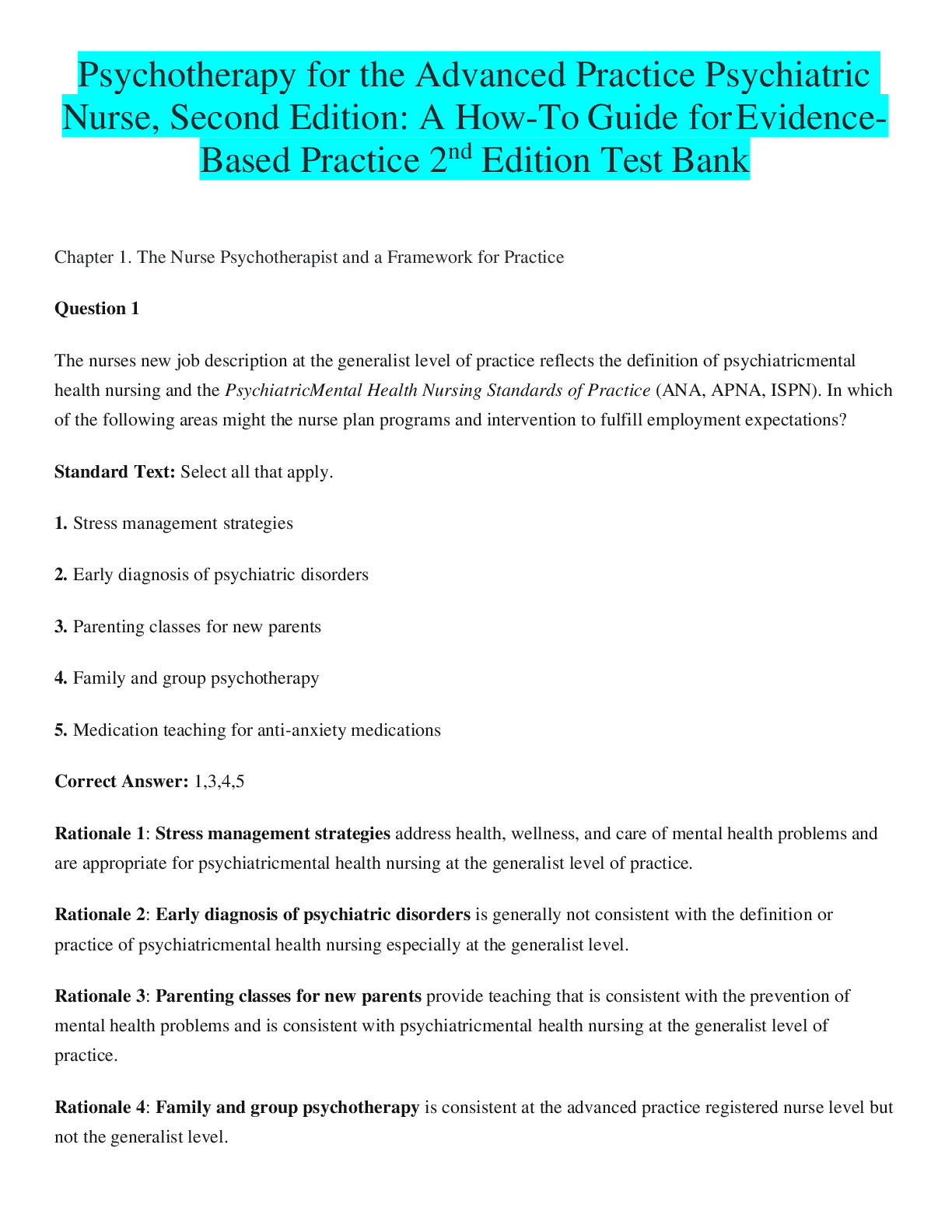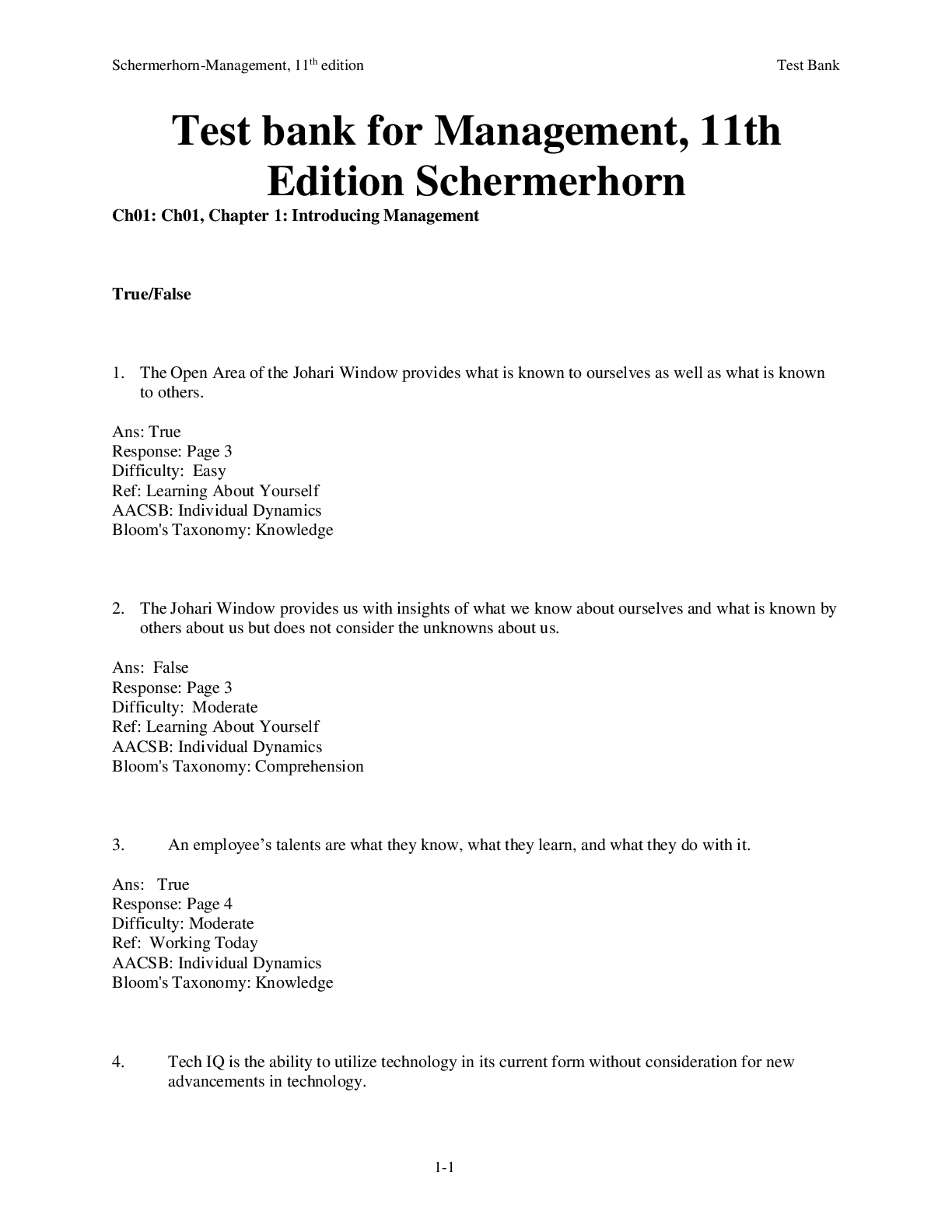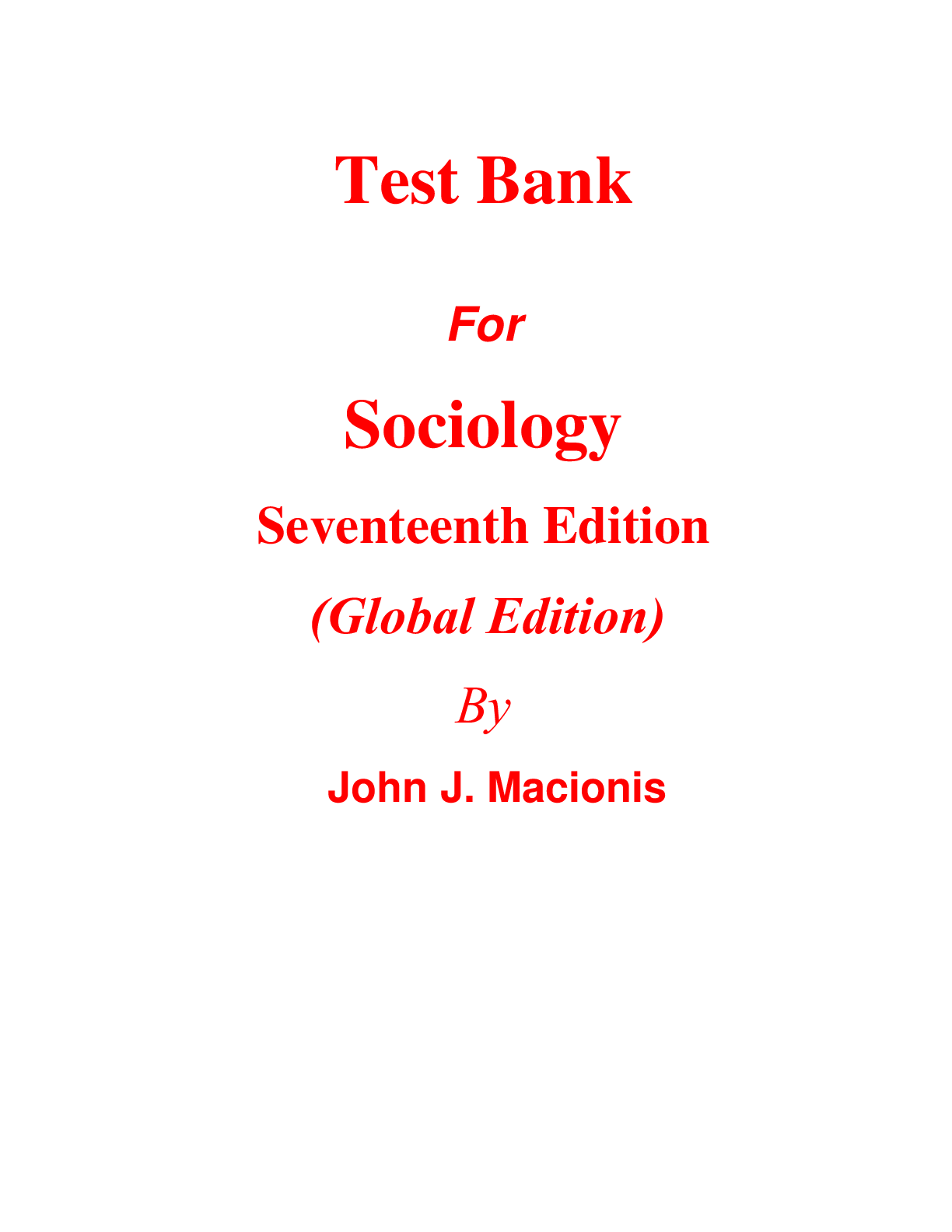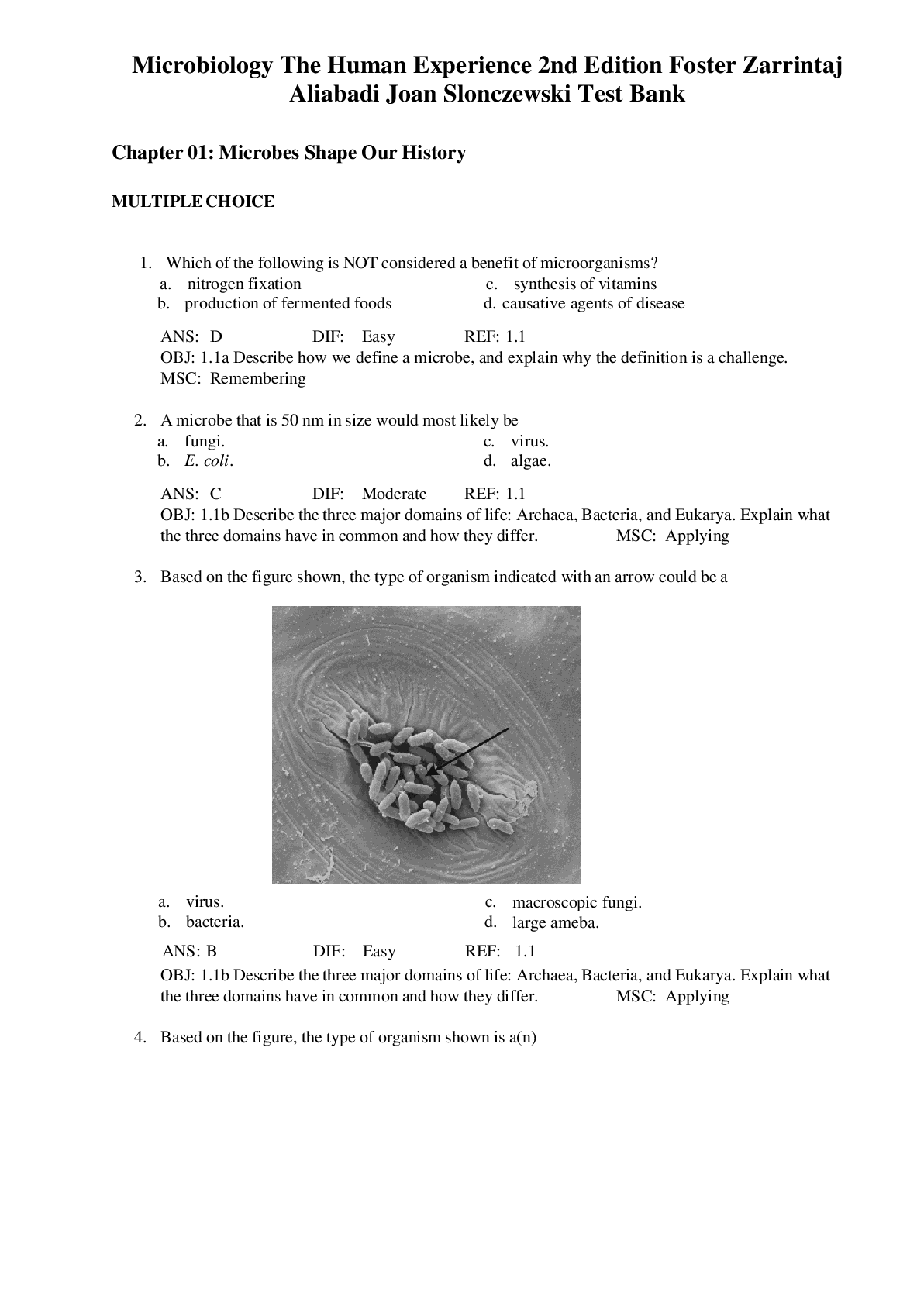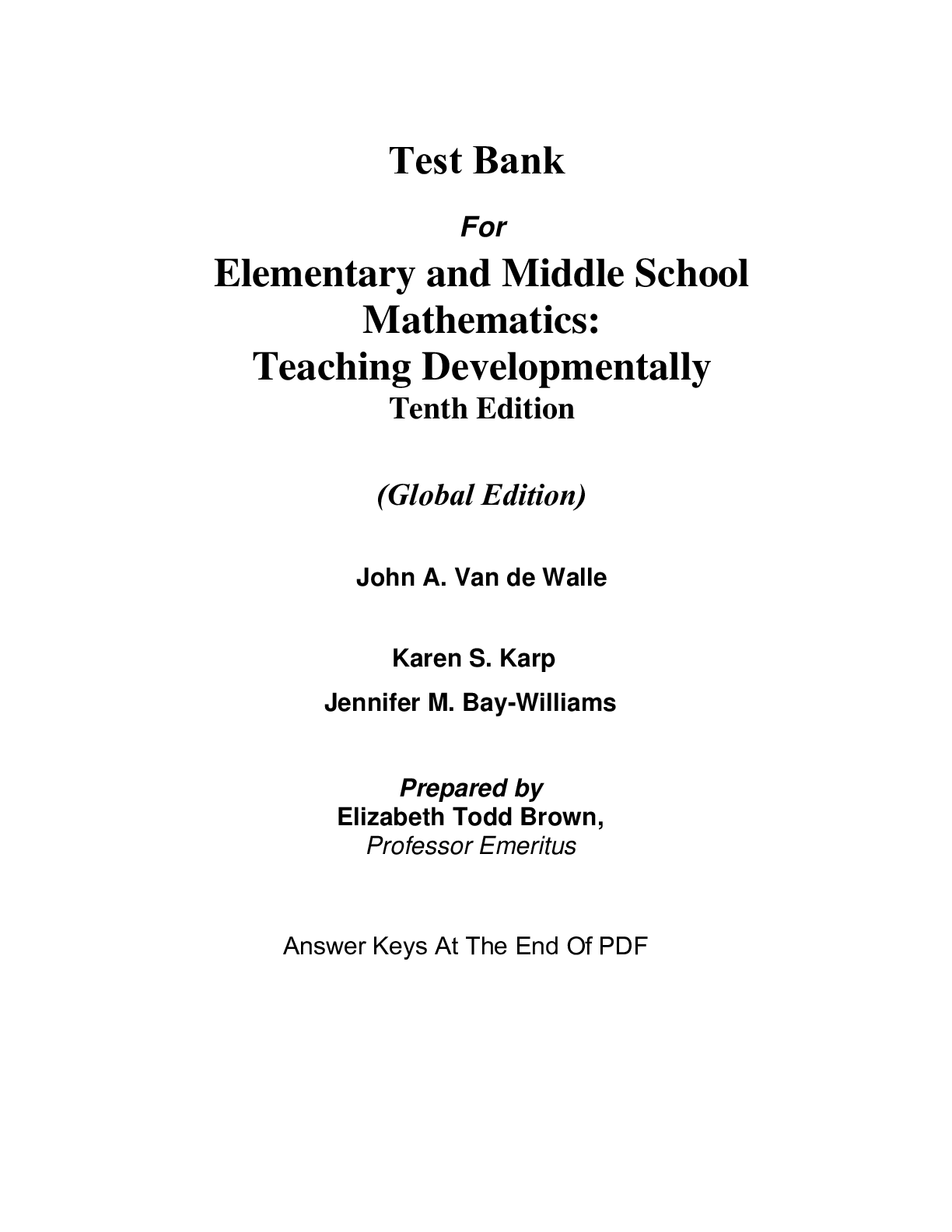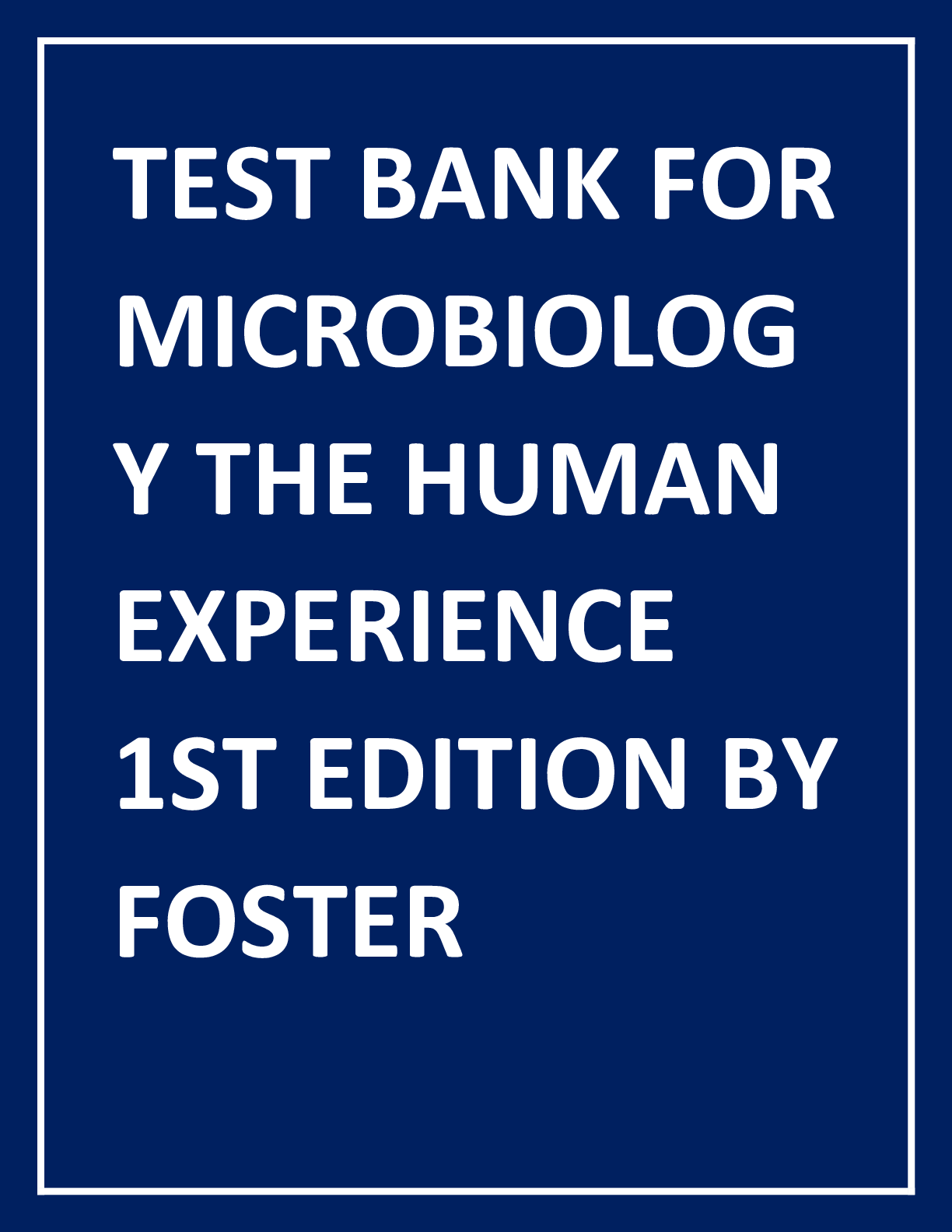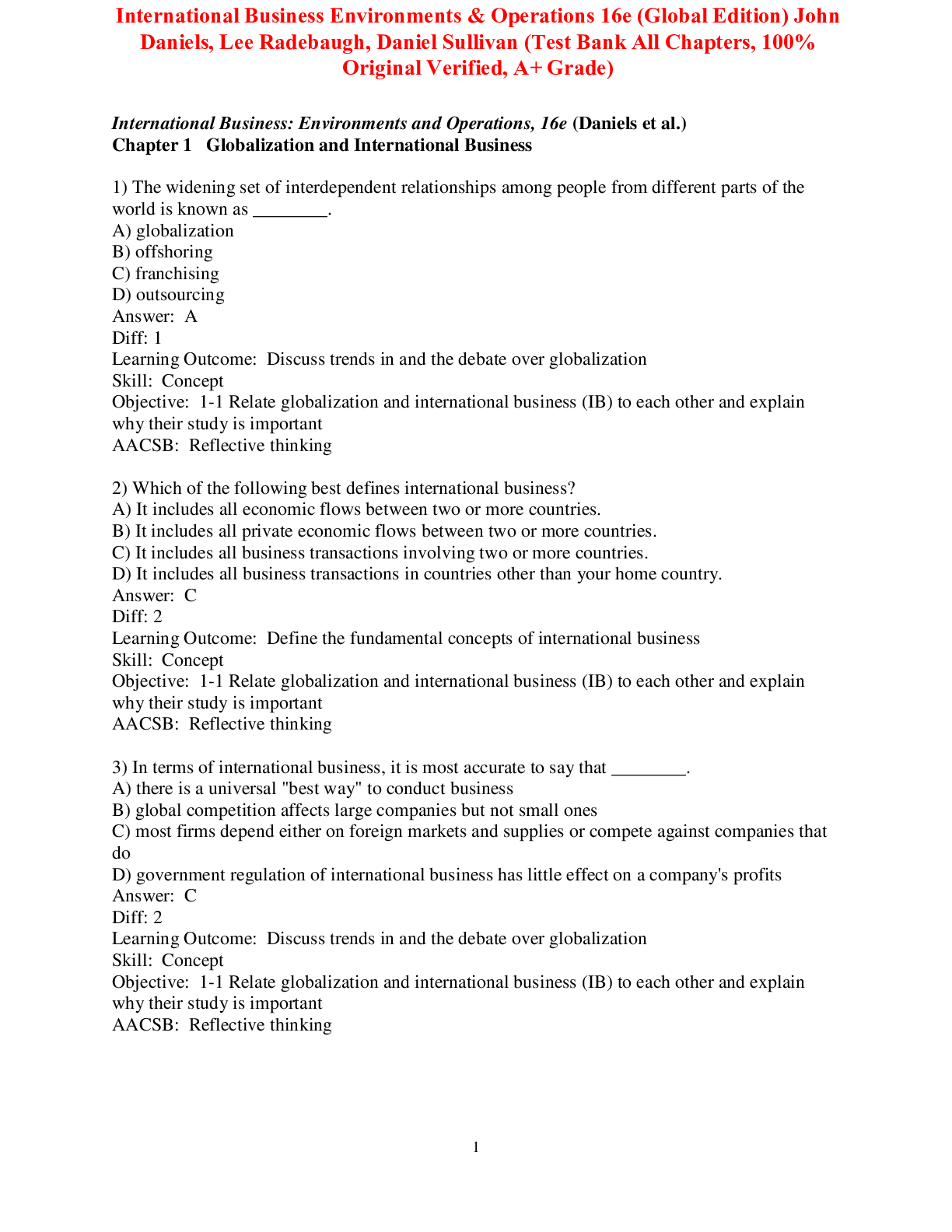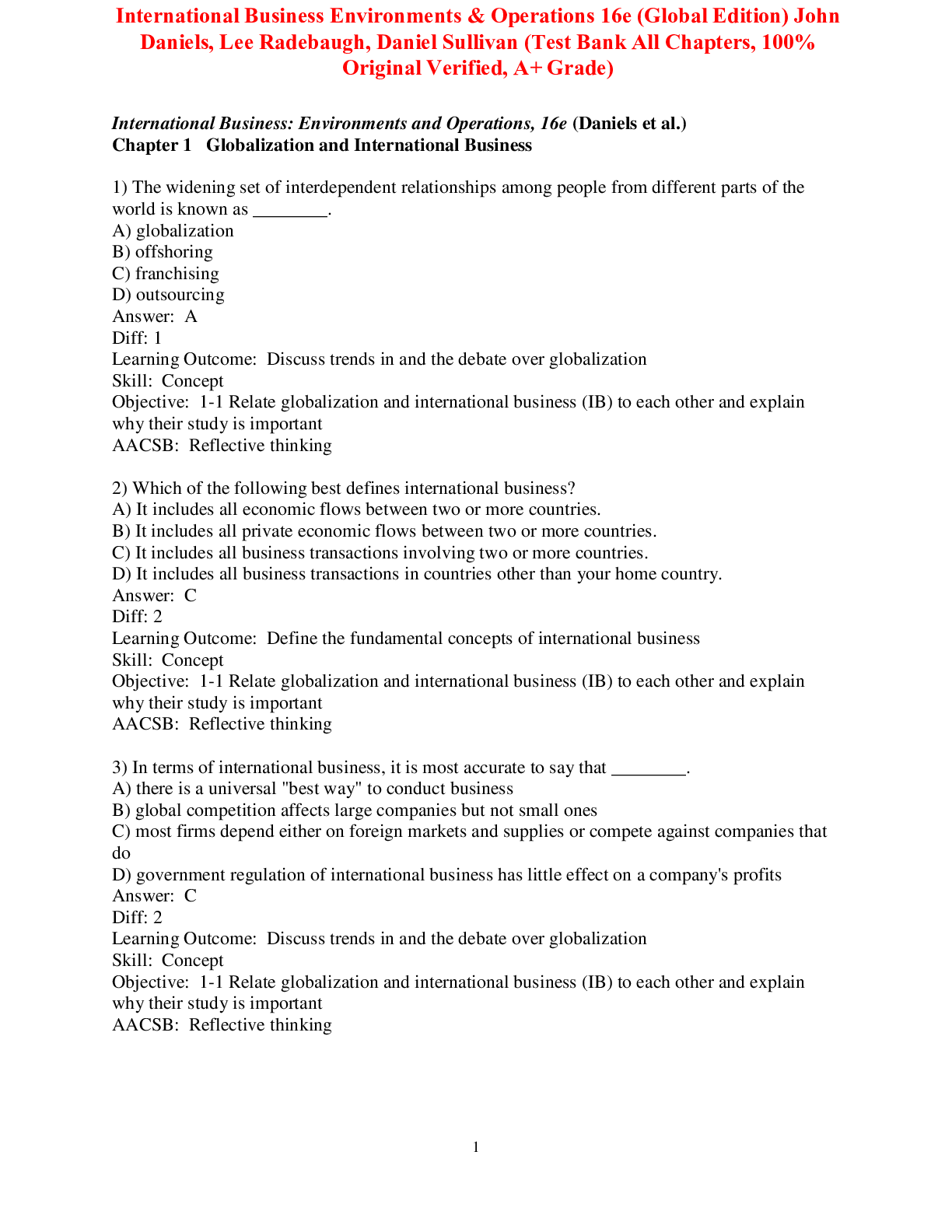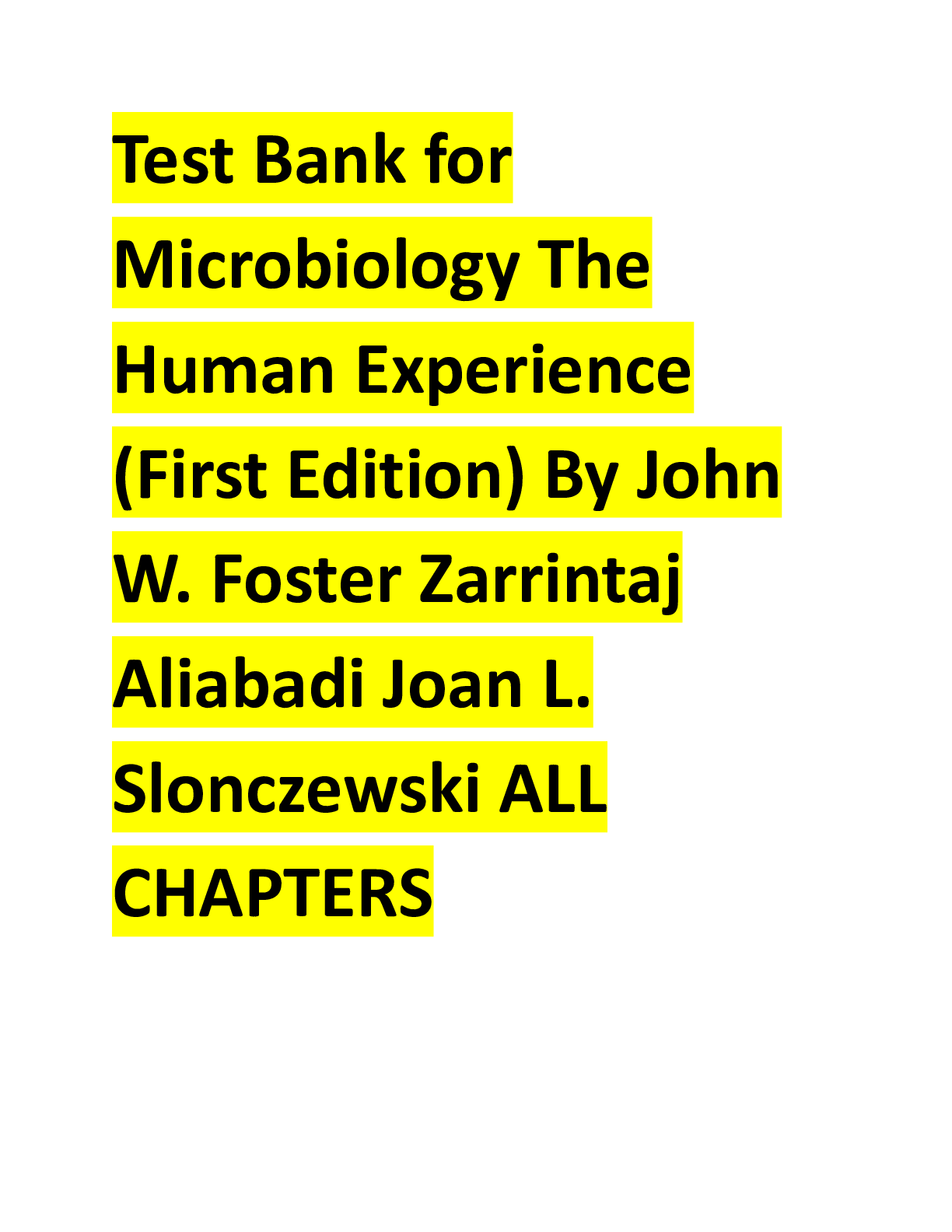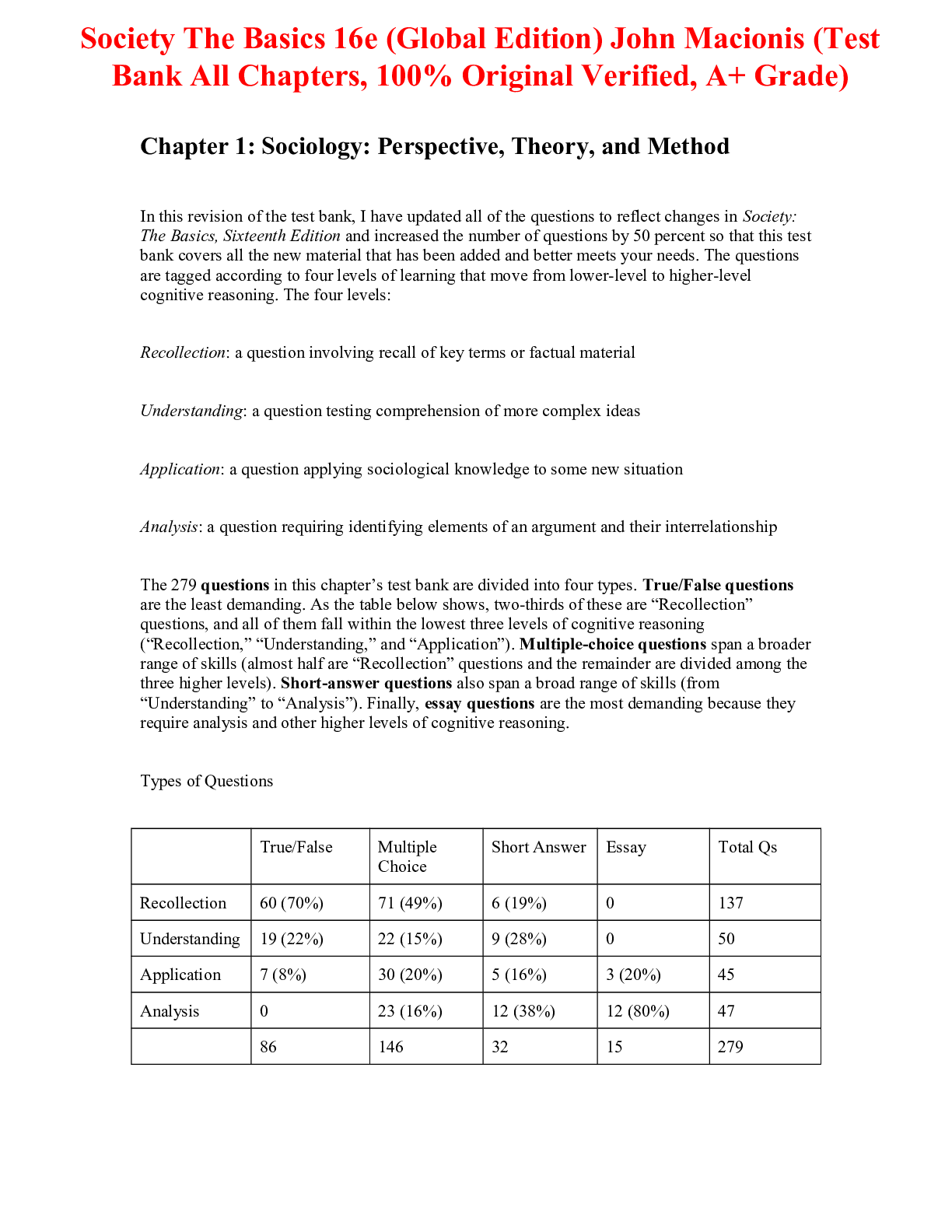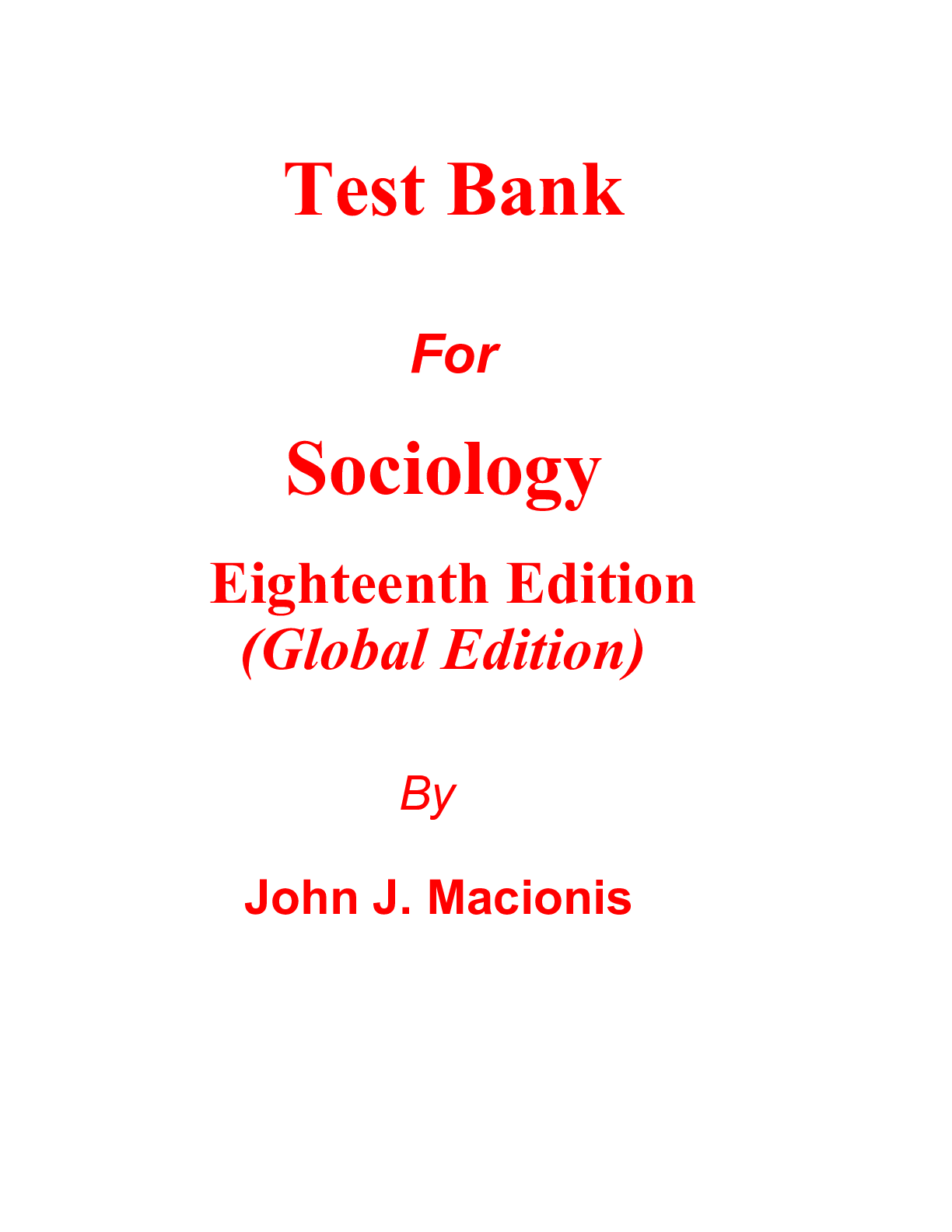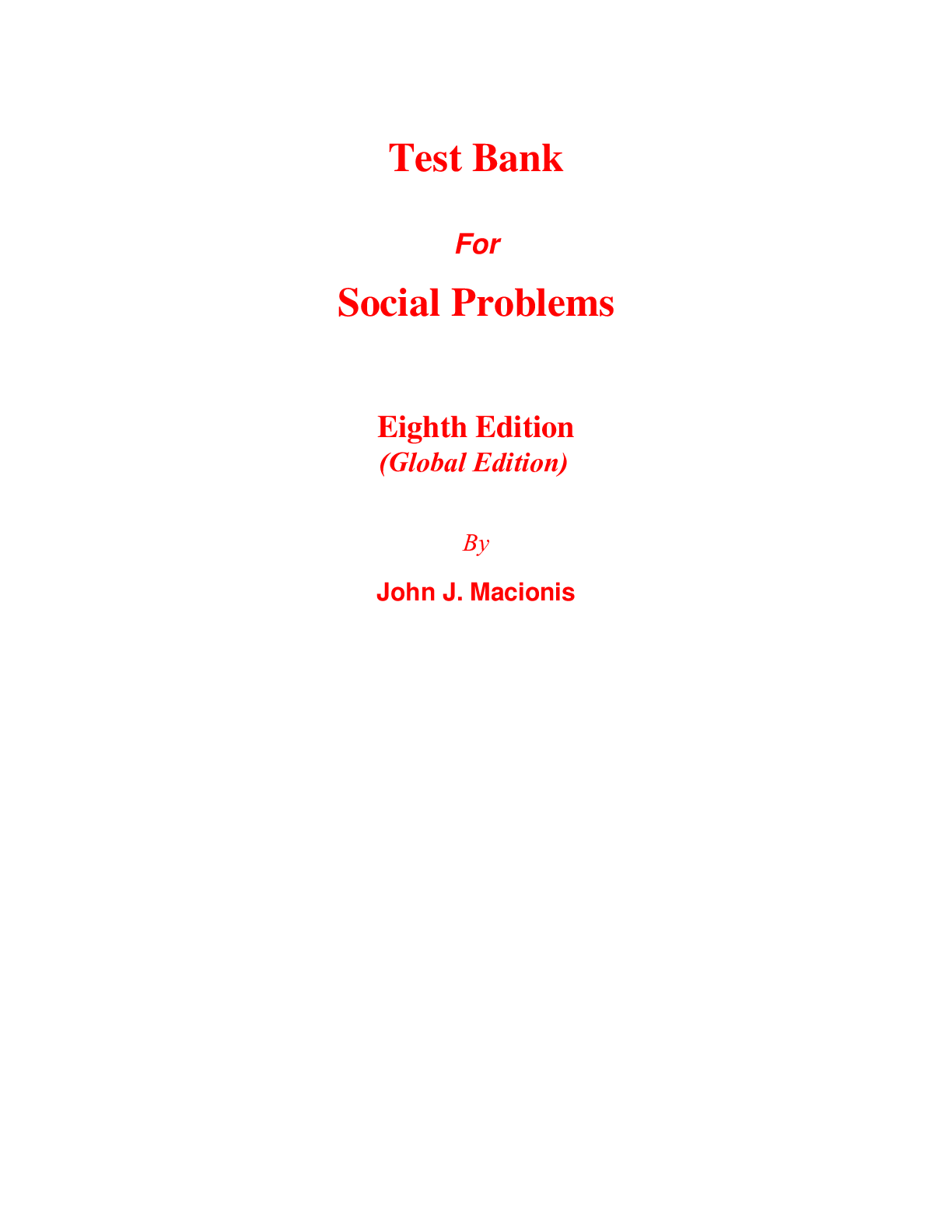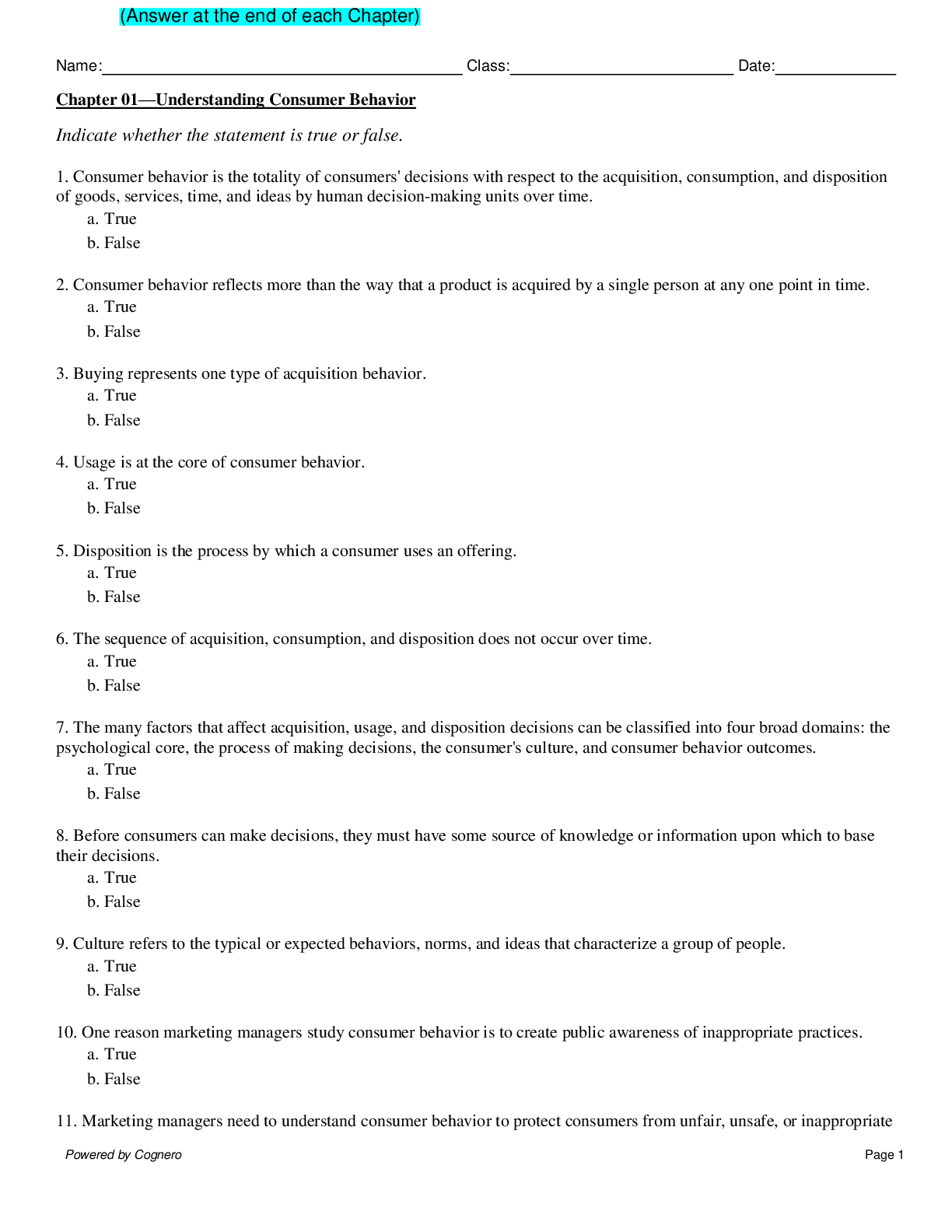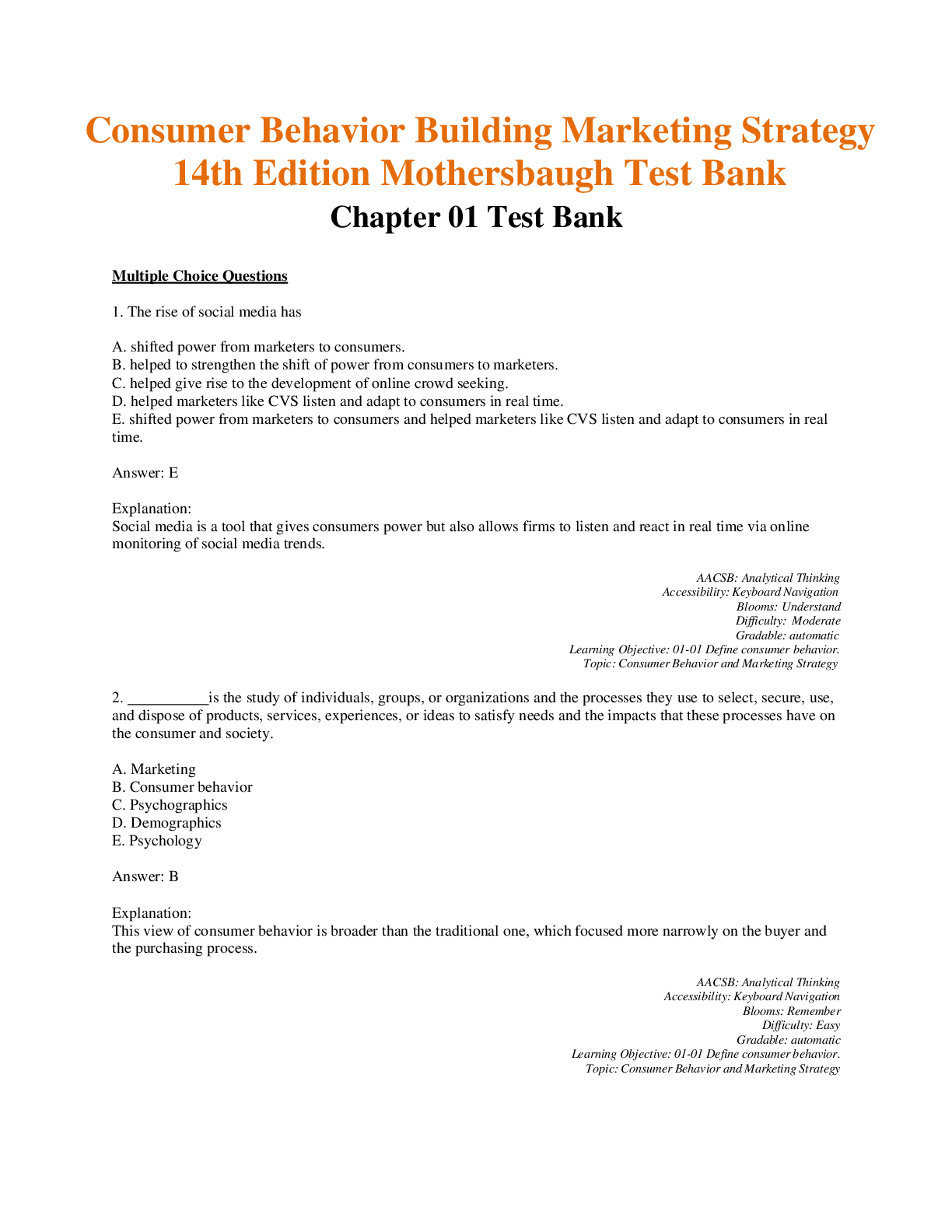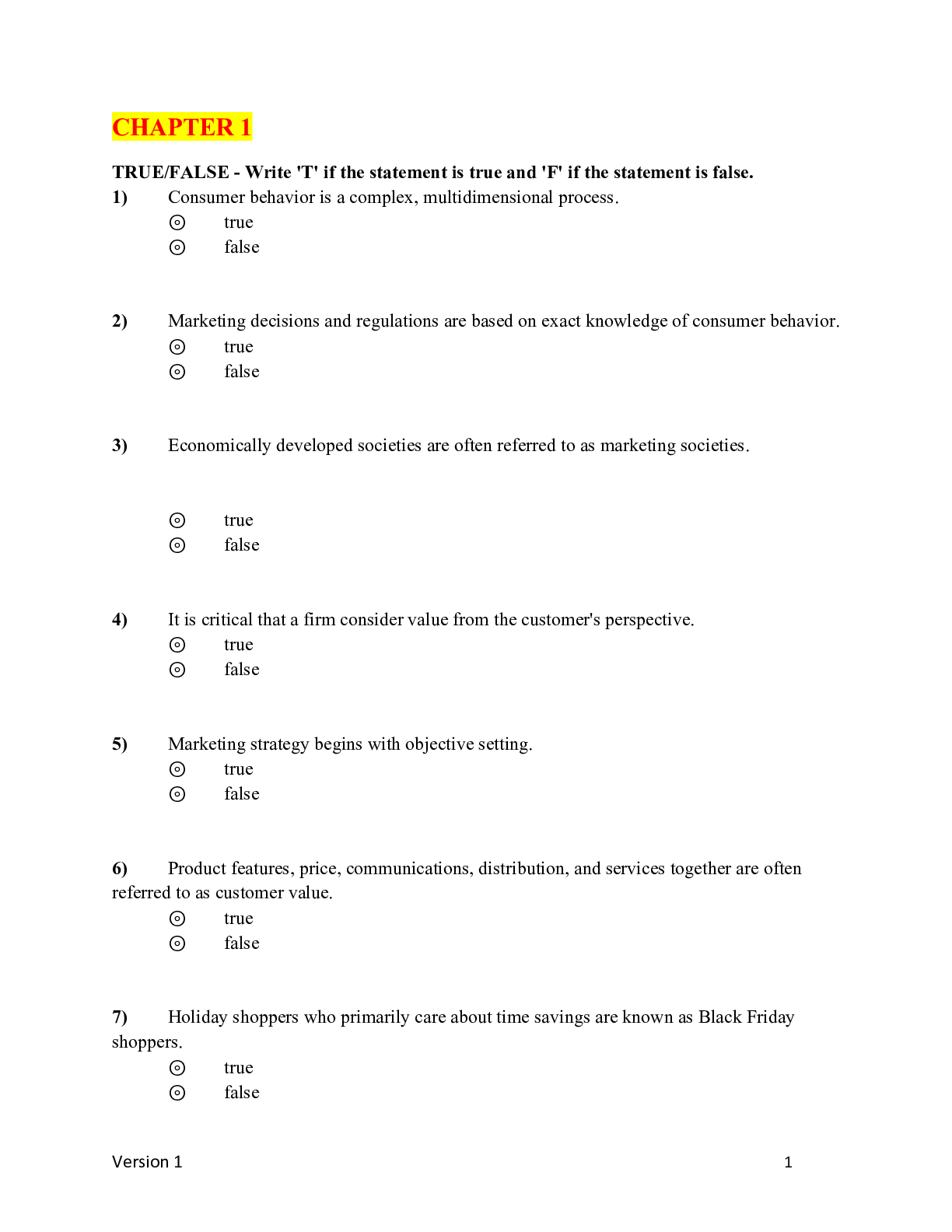Micro Biology > TEST BANK > Test Bank for Microbiology The Human Experience (First Edition) By John W. Foster Zarrintaj Aliabadi (All)
Test Bank for Microbiology The Human Experience (First Edition) By John W. Foster Zarrintaj Aliabadi Joan L. Slonczewski ALL CHAPTERS
Document Content and Description Below
Chapter 01: Microbes Shape Our History MULTIPLE CHOICE 1. Which of the following is NOT considered a benefit of microorganisms? a. nitrogen fixation c. synthesis of vitamins b. production of ferme... nted foods d. causative agents of disease ANS: D DIF: Easy REF: 1.1 OBJ: 1.1a Describe how we define a microbe, and explain why the definition is a challenge. MSC: Remembering 2. A microbe that is 50 nm in size would most likely be a. fungi. c. virus. b. E. coli. d. algae. ANS: C DIF: Moderate REF: 1.1 OBJ: 1.1b Describe the three major domains of life: Archaea, Bacteria, and Eukarya. Explain what the three domains have in common and how they differ. MSC: Applying 3. Based on the figure shown, the type of organism indicated with an arrow could be a a. virus. c. macroscopic fungi. b. bacteria. d. large ameba. ANS: B DIF: Easy REF: 1.1 OBJ: 1.1b Describe the three major domains of life: Archaea, Bacteria, and Eukarya. Explain what the three domains have in common and how they differ. MSC: Applying 4. Based on the figure, the type of organism shown is a(n) a. virus. c. archaea. b. bacteria. d. eukaryote. ANS: D DIF: Moderate REF: 1.1 OBJ: 1.1b Describe the three major domains of life: Archaea, Bacteria, and Eukarya. Explain what the three domains have in common and how they differ. MSC: Applying 5. Which of the following demonstrates correct scientific notation of a bacterial organism? a. Staphylococcus Epidermidis c. Staphylococcus epidermidis b. Staphylococcus epidermidis d. Staphylococcus Epidermidis ANS: C DIF: Easy REF: 1.1 OBJ: 1.1b Describe the three major domains of life: Archaea, Bacteria, and Eukarya. Explain what the three domains have in common and how they differ. MSC: Applying 6. Which key characteristic differentiates a prokaryote from a eukaryote? a. the absence of proteins b. the presence of DNA c. the absence of membrane-bound organelles d. the presence of a cell wall [Show More]
Last updated: 11 months ago
Preview 1 out of 423 pages
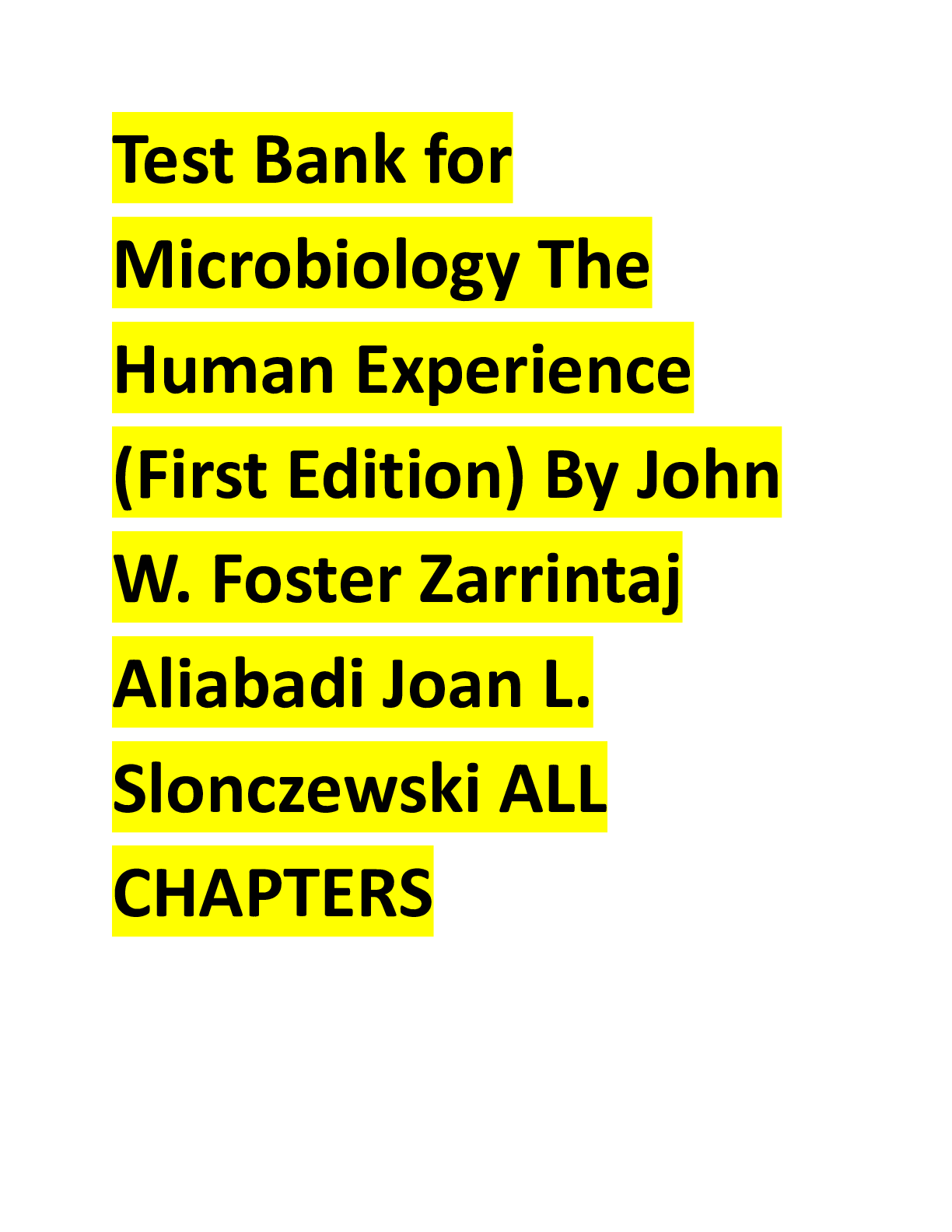
Reviews( 0 )
Document information
Connected school, study & course
About the document
Uploaded On
Feb 22, 2023
Number of pages
423
Written in
Additional information
This document has been written for:
Uploaded
Feb 22, 2023
Downloads
0
Views
70


